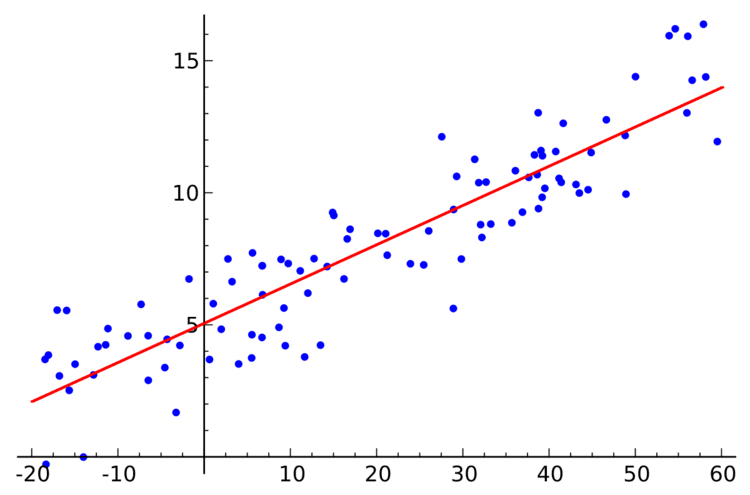In statistics and econometrics, the multivariate probit model is a generalization of the probit model used to estimate several correlated binary outcomes jointly. For example, if it is believed that the decisions of sending at least one child to public school and that of voting in favor of a school budget are correlated (both decisions are binary), then the multivariate probit model would be appropriate for jointly predicting these two choices on an individual-specific basis.
In the ordinary probit model, there is only one binary dependent variable Y and so only one latent variable Y ∗ is used. In contrast, in the bivariate probit model there are two binary dependent variables Y 1 and Y 2 , so there are two latent variables: Y 1 ∗ and Y 2 ∗ . It is assumed that each observed variable takes on the value 1 if and only if its underlying continuous latent variable takes on a positive value:
Y 1 = { 1 if Y 1 ∗ > 0 , 0 otherwise , Y 2 = { 1 if Y 2 ∗ > 0 , 0 otherwise , with
{ Y 1 ∗ = X 1 β 1 + ε 1 Y 2 ∗ = X 2 β 2 + ε 2 and
[ ε 1 ε 2 ] ∣ X ∼ N ( [ 0 0 ] , [ 1 ρ ρ 1 ] ) Fitting the bivariate probit model involves estimating the values of β 1 , β 2 , and ρ . To do so, the likelihood of the model has to be maximized. This likelihood is
L ( β 1 , β 2 ) = ( ∏ P ( Y 1 = 1 , Y 2 = 1 ∣ β 1 , β 2 ) Y 1 Y 2 P ( Y 1 = 0 , Y 2 = 1 ∣ β 1 , β 2 ) ( 1 − Y 1 ) Y 2 P ( Y 1 = 1 , Y 2 = 0 ∣ β 1 , β 2 ) Y 1 ( 1 − Y 2 ) P ( Y 1 = 0 , Y 2 = 0 ∣ β 1 , β 2 ) ( 1 − Y 1 ) ( 1 − Y 2 ) ) Substituting the latent variables Y 1 ∗ and Y 2 ∗ in the probability functions and taking logs gives
∑ ( Y 1 Y 2 ln P ( ε 1 > − X 1 β 1 , ε 2 > − X 2 β 2 ) + ( 1 − Y 1 ) Y 2 ln P ( ε 1 < − X 1 β 1 , ε 2 > − X 2 β 2 ) + Y 1 ( 1 − Y 2 ) ln P ( ε 1 > − X 1 β 1 , ε 2 < − X 2 β 2 ) + ( 1 − Y 1 ) ( 1 − Y 2 ) ln P ( ε 1 < − X 1 β 1 , ε 2 < − X 2 β 2 ) ) . After some rewriting, the log-likelihood function becomes:
∑ ( Y 1 Y 2 ln Φ ( X 1 β 1 , X 2 β 2 , ρ ) + ( 1 − Y 1 ) Y 2 ln Φ ( − X 1 β 1 , X 2 β 2 , − ρ ) + Y 1 ( 1 − Y 2 ) ln Φ ( X 1 β 1 , − X 2 β 2 , − ρ ) + ( 1 − Y 1 ) ( 1 − Y 2 ) ln Φ ( − X 1 β 1 , − X 2 β 2 , ρ ) ) . Note that Φ is the cumulative distribution function of the bivariate normal distribution. Y 1 and Y 2 in the log-likelihood function are observed variables being equal to one or zero.

